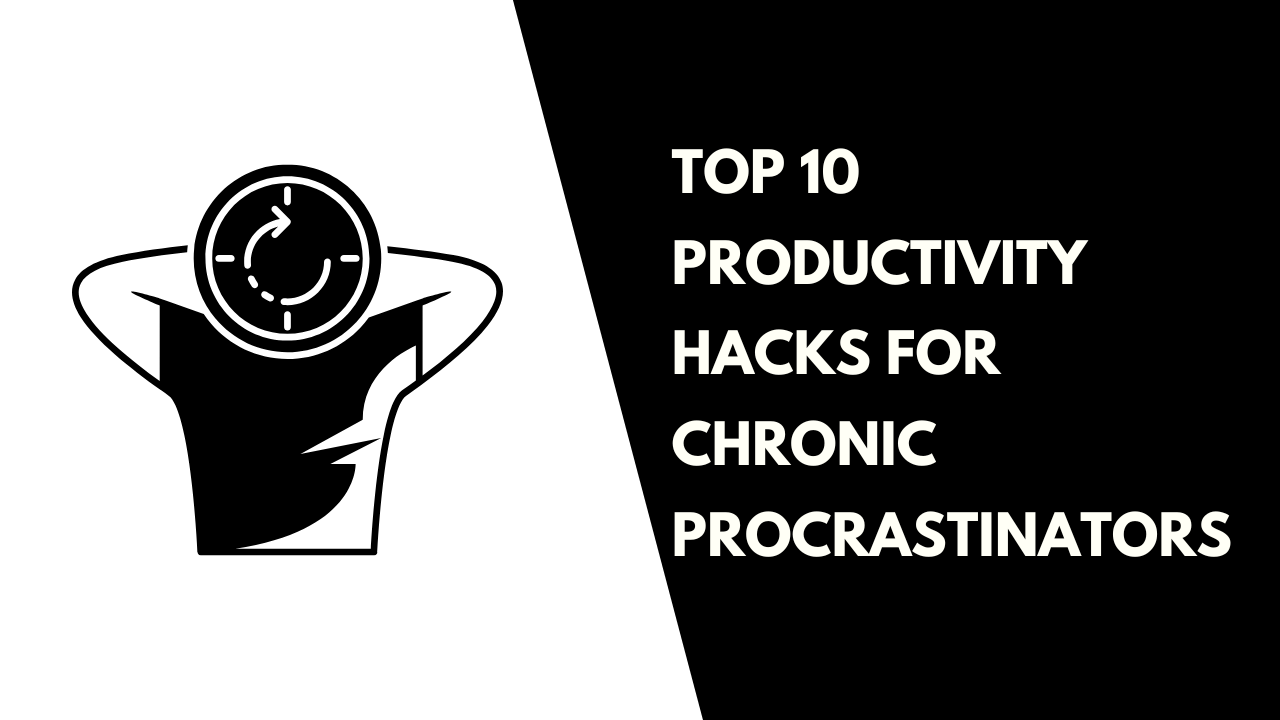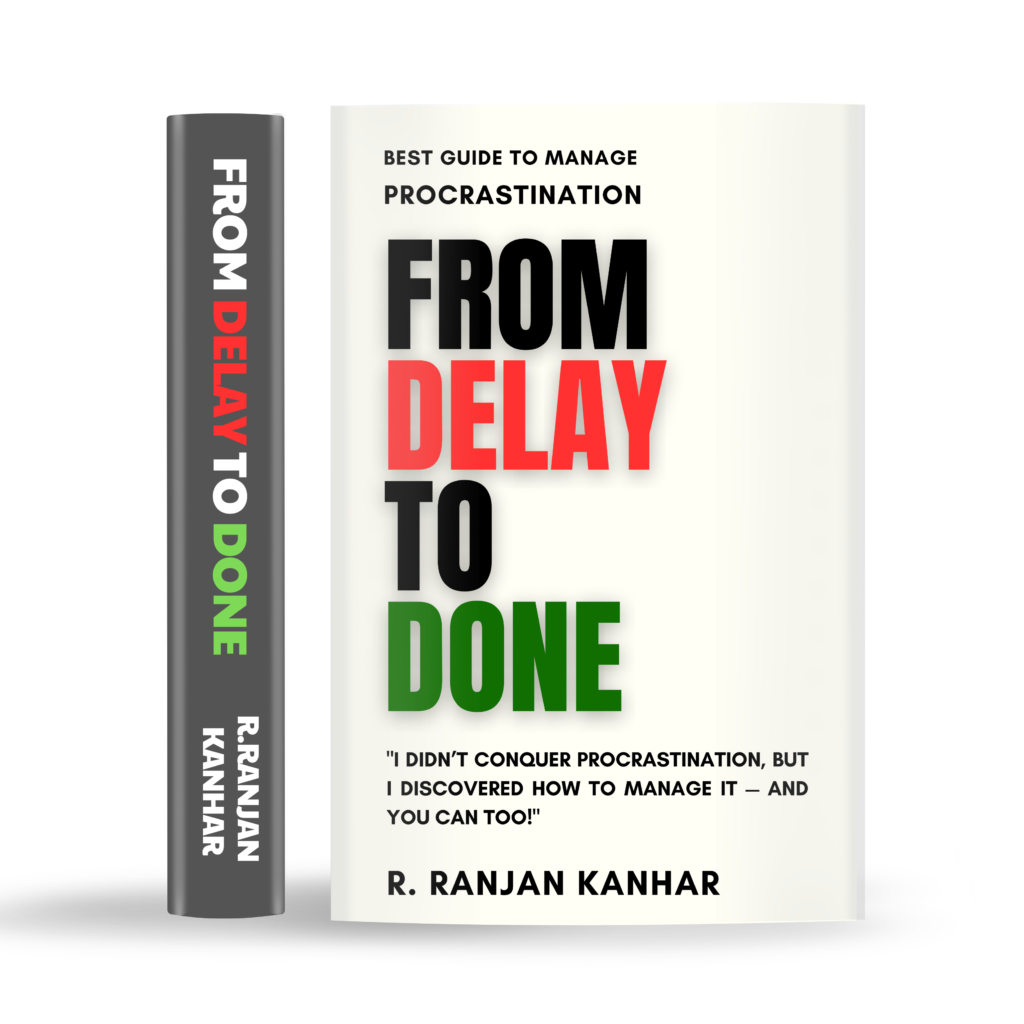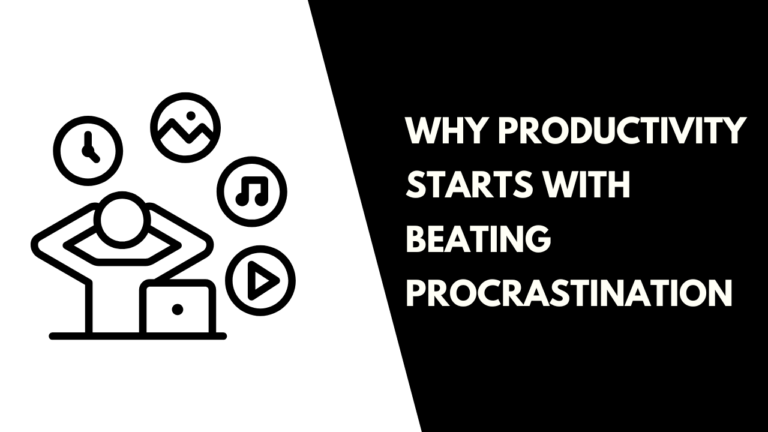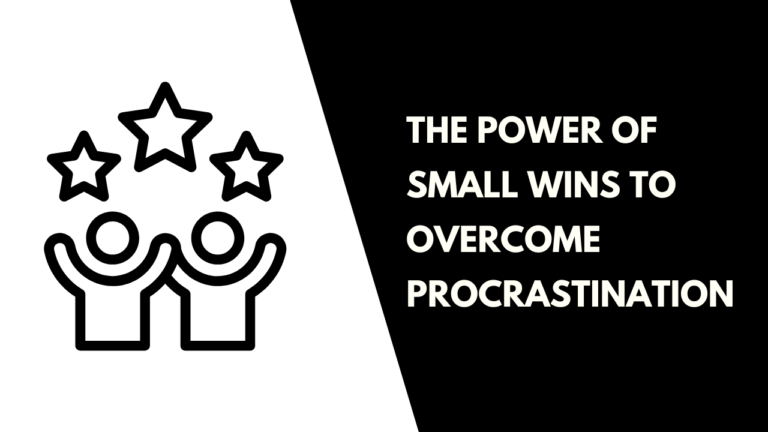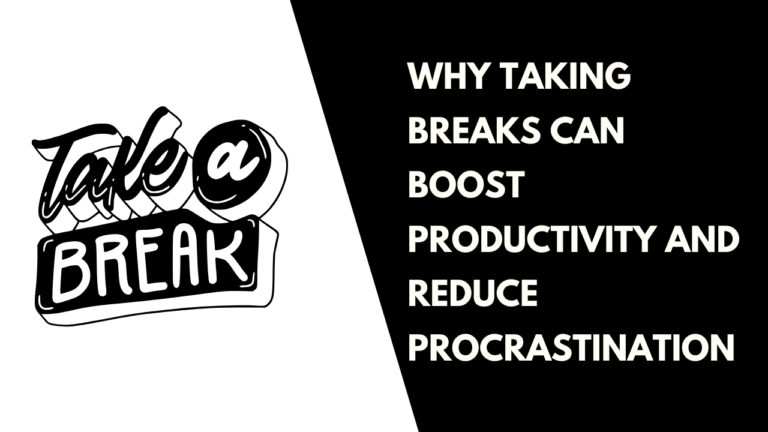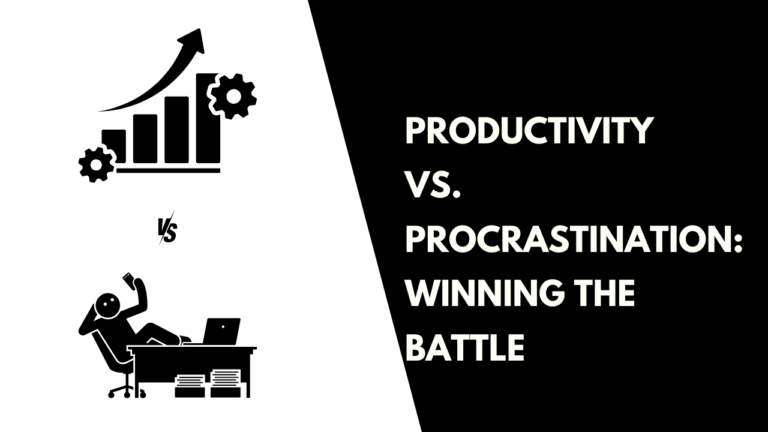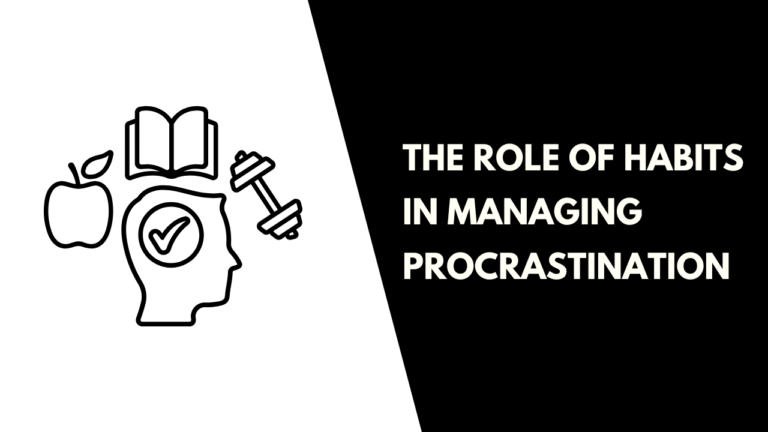Top 10 Productivity Hacks for Chronic Procrastinators
Top 10 Productivity Hacks for Chronic Procrastinators
The title serves as the cornerstone of the blog, immediately capturing attention. It highlights the problem (chronic procrastinator) and the solution (productivity hacks) to set expectations for readers.
Table of Contents
ToggleIntroduction
Understanding Procrastination
Start with a relatable statement like, “We’ve all been there—staring at a long to-do list, doing everything but the tasks on it.” Explain procrastination as a common challenge but delve deeper into why chronic procrastinators struggle repeatedly. Use terms like “habitual delay” and “self-sabotage” to frame the discussion.
Why Chronic Procrastination Happens
Break down psychological factors:
- Fear of failure: Anxiety about imperfect results leads to avoidance.
- Perfectionism: The belief that everything must be flawless before starting.
- Overwhelm: Large tasks can feel insurmountable, causing inaction.
Example: A chronic procrastinator might postpone writing a report because it feels too big to tackle, leading to a last-minute scramble.
The Importance of Tackling Procrastination
Discuss consequences such as missed opportunities, stress, and damaged self-confidence. Transition by saying, “The good news? There are productivity hacks tailored to help chronic procrastinators overcome these challenges.”
Hack 1: Break Tasks into Smaller Steps
How Micro-Tasks Reduce Overwhelm
Breaking large tasks into small, manageable steps reduces mental resistance. Explain how this trick simplifies starting a project.
For example, rather than “write a report,” divide it into:
- Research relevant data.
- Create an outline.
- Draft the introduction.
Real-Life Examples of Task Breakdown
A chronic procrastinator assigned to clean their home could:
- Focus on one room or corner.
- Start with a simple task, like picking up clutter.
- Gradually build momentum.
Tip: Use tools like checklists to visualize progress.
Hack 2: Use the Two-Minute Rule
What is the Two-Minute Rule?
Coined by David Allen, the rule is simple: if a task takes less than two minutes, do it immediately. This eliminates small tasks that pile up.
Why It Works Wonders for Procrastinators
For those who frequently procrastinate, taking the first step is often the most challenging. The Two-Minute Rule builds momentum by turning intention into action.
Example: Responding to a short email or tidying your desk. These small wins often lead to tackling bigger tasks.
Hack 3: Set SMART Goals
Understanding SMART Goals
Explain the acronym:
- Specific: Define what you want to achieve.
- Measurable: Add metrics to track progress.
- Achievable: Ensure goals are realistic.
- Relevant: Align goals with priorities.
- Time-bound: Set deadlines.
How They Keep You Focused
Chronic procrastinators benefit from structure. SMART goals offer clarity, reducing excuses to delay.
For instance, rather than saying “exercise more,” create a SMART goal such as, “Walk for 30 minutes a day, 5 days this week.”
Hack 4: Try the Pomodoro Technique
What is the Pomodoro Technique?
A time management technique that involves working in focused sessions, usually 25 minutes long, followed by brief breaks.
Steps to Implement It Successfully
- Choose a task.
- Set a timer for 25 minutes.
- Work without interruption.
- Take a 5-minute break.
- Repeat the process four times, then take a longer break.
Example in Action
A chronic procrastinator writing an essay can:
- Use the first Pomodoro to brainstorm ideas.
- Use the next one to draft the introduction.
- Progress step-by-step, avoiding burnout.
Hack 5: Use the Eisenhower Matrix to Prioritize Tasks.
What is the Eisenhower Matrix?
A productivity tool that divides tasks into four categories:
- Urgent and important.
- Important but not urgent.
- Urgent but not important.
- Neither urgent nor important.
Separating Urgent from Important
Chronic procrastinators often confuse urgency with importance. The Eisenhower Matrix clarifies priorities, helping focus on meaningful tasks.
Example: Preparing a presentation due tomorrow (urgent and important) vs. decluttering your inbox (important but not urgent).
Hack 6: Find Your Peak Productivity Hours
The Science Behind Energy Cycles
Explain circadian rhythms and how energy peaks at different times for individuals (morning larks vs. night owls).
Tips to Identify Your Peak Times
Track your energy and focus over a week. Use tools like journals or apps to find patterns.
Example: If a chronic procrastinator feels most alert in the morning, schedule demanding tasks during those hours.
Hack 7: Eliminate Distractions
Common Distractions and Their Impact
List distractions like:
- Smartphones.
- Social media.
- Cluttered environments.
Creating a Distraction-Free Zone
Offer actionable tips:
- Use apps like Freedom to block sites.
- Keep your workspace organized.
- Set boundaries with others.
Example: A student struggling to focus on assignments can silence notifications and use a separate room for studying.
Hack 8: Reward Yourself for Progress
Why Rewards Motivate Action
Rewards trigger dopamine, reinforcing positive behavior. They’re especially helpful for chronic procrastinators who struggle to find intrinsic motivation.
Examples of Effective Rewards
- Small: Treat yourself to coffee after completing a task.
- Big: Plan a weekend trip after finishing a major project.
Example: A procrastinator completing a week of workouts could reward themselves with new workout gear.
Hack 9: Practice Self-Compassion
The Role of Self-Kindness in Overcoming Procrastination
Procrastinators often beat themselves up for delays, creating a cycle of guilt. Self-compassion breaks this loop.
Tips to Build a Positive Inner Dialogue
Replace self-criticism with encouraging statements like, “I’m making progress.”
Example: If a chronic procrastinator misses a deadline, instead of saying, “I’m a failure,” they can reflect, “I can learn from this and plan better next time.”
Hack 10: Use Accountability Partners
How Accountability Boosts Productivity
Having someone to report to creates external pressure to follow through.
Finding the Right Accountability Partner
Look for someone reliable, empathetic, and goal-oriented.
Example: A chronic procrastinator can pair with a colleague to check in weekly on progress for mutual support.
Conclusion
Recap of the Hacks
Summarize the top 10 hacks and emphasize how small changes can create lasting impact.
Encouragement to Start Small and Stay Consistent
Reassure readers that overcoming procrastination takes time and consistency. Remind them of the potential for positive transformation.
FAQs
What is the main cause of chronic procrastination?
Chronic procrastination often stems from perfectionism, fear of failure, or lack of motivation.
Can procrastination be completely cured?
While it may not disappear entirely, consistent application of productivity hacks can make it manageable.
How does procrastination affect mental health?
It can lead to stress, anxiety, and low self-esteem.
Are productivity apps helpful for procrastinators?
Yes, apps like Trello and Notion help organize tasks and build momentum.
How long does it take to overcome chronic procrastination?
Results vary, but noticeable improvement can occur within weeks of consistent effort.
“Stop postponing your dreams! From Delay to Done is your ultimate guide to conquering procrastination. Grab your copy today on Amazon!
